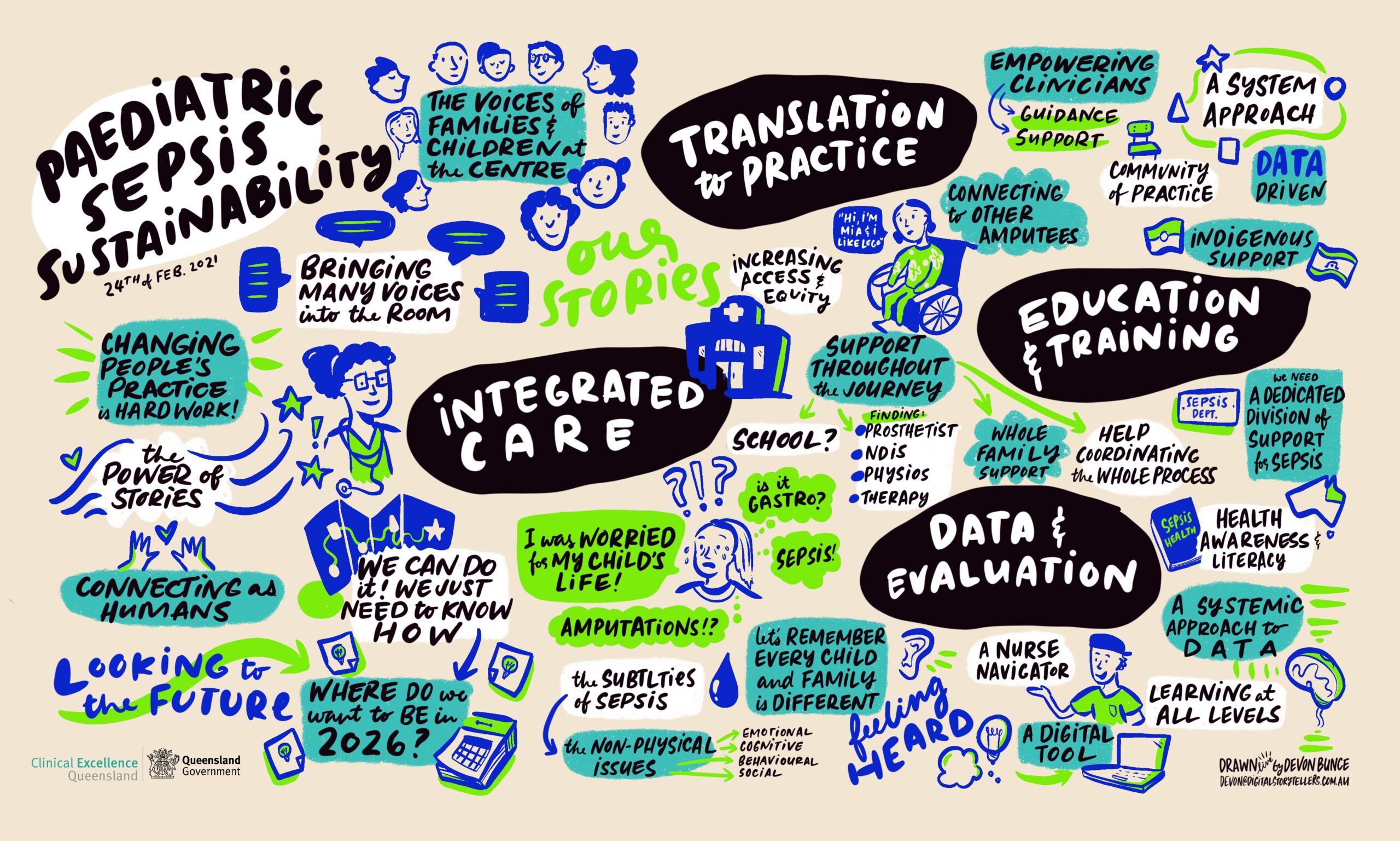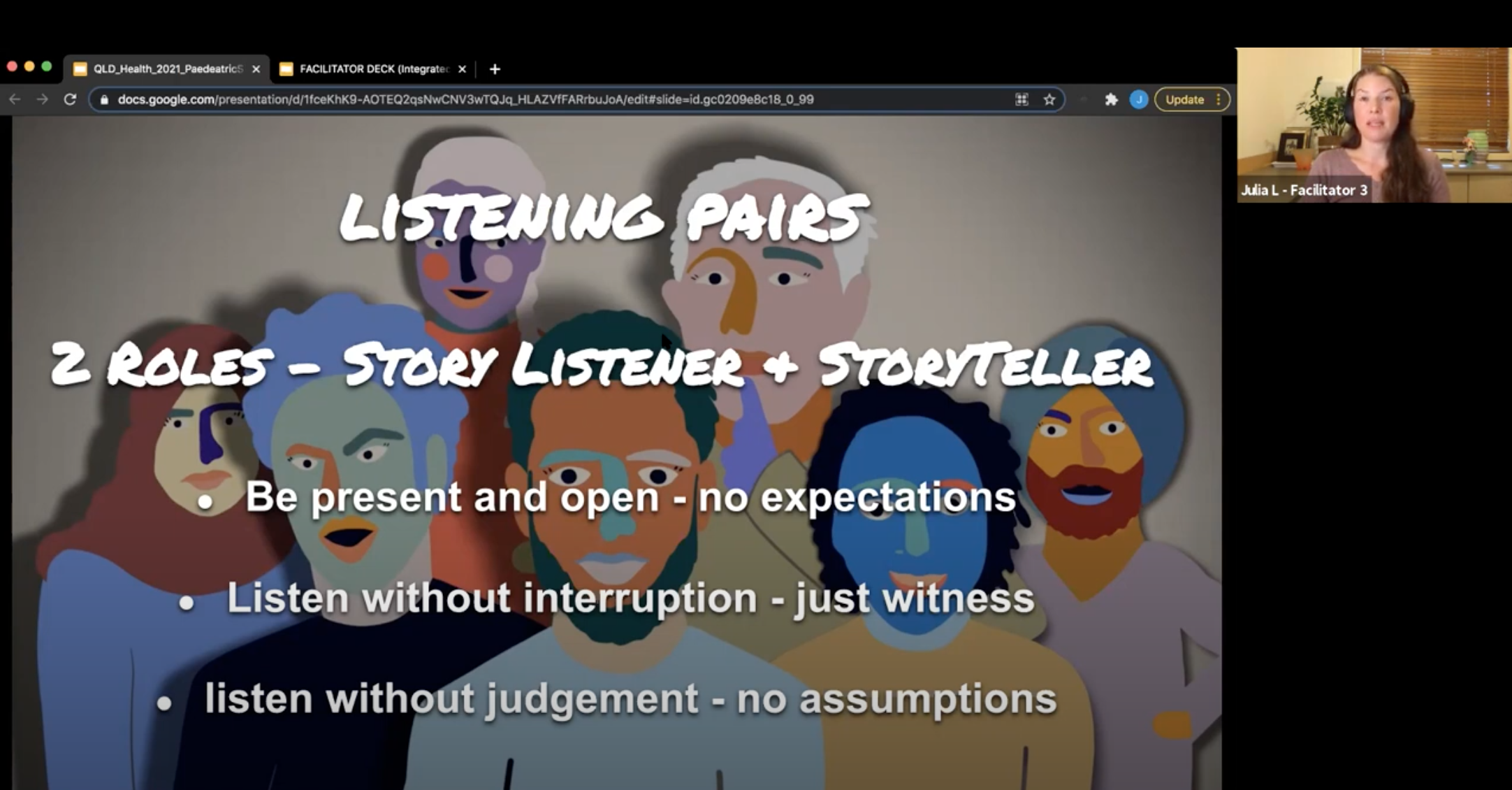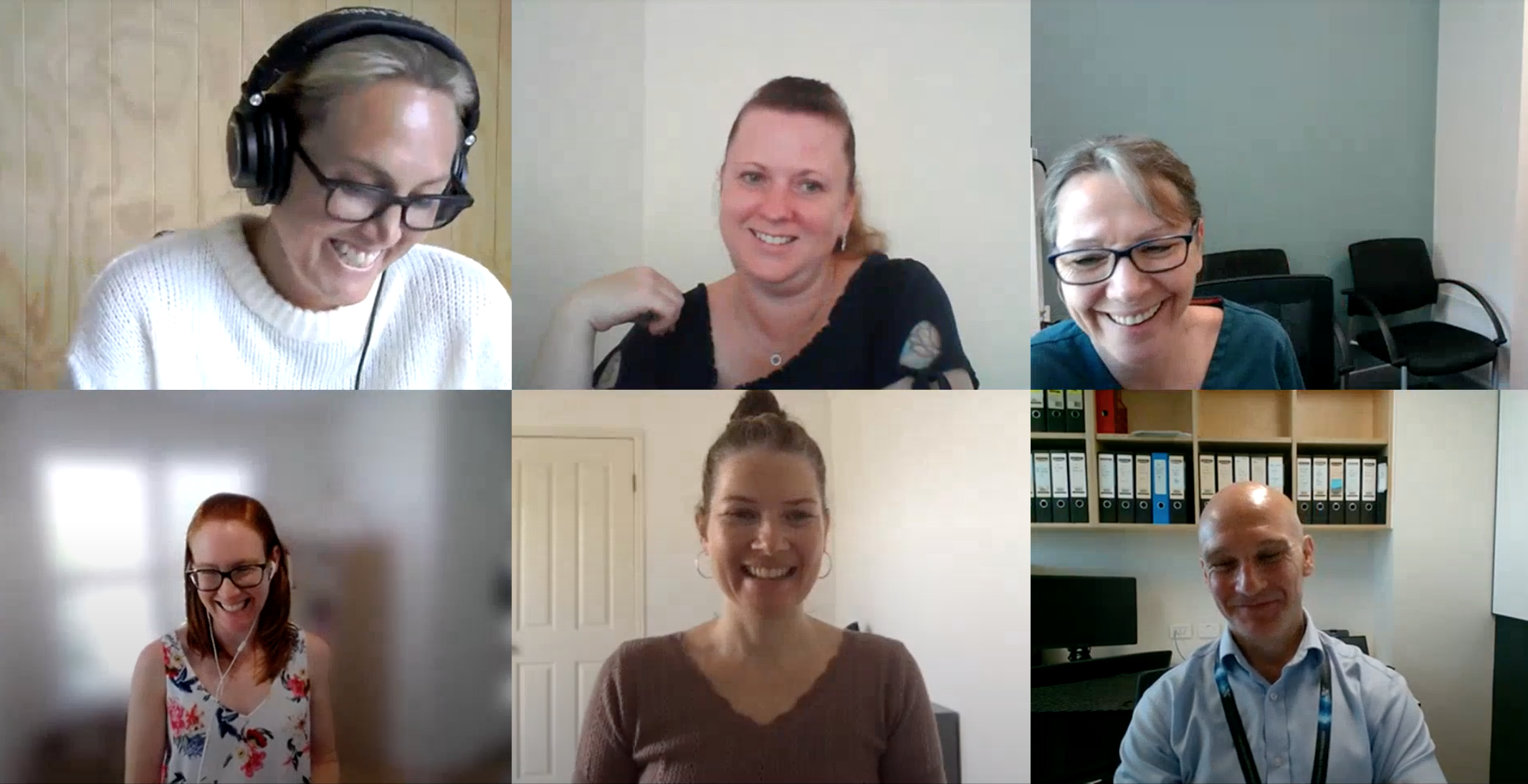The challenge
Without treatment, paediatric sepsis can quickly lead to tissue damage, multiple organ failure and death. So, how could we hold space for the reality of this illness in a way that also helped to elicit key themes and action areas in order to create a Five Year Sustainability Roadmap?
Together, they wanted to:
- Create an engaging, story-led consultation process for a wide range of stakeholders, including families, GPs, clinicians, and other health professionals, all done virtually;
- Increase sustainability, awareness and improve outcomes for paediatric sepsis by putting human stories at the centre;
- Draw out rich qualitative data insights to help develop actionable recommendations for the sector’s Five Year Sustainability Roadmap;
- Build facilitation skills and storycraft of staff to hold space for, and draw out, stories and to help stakeholders from all sides to be heard and included in the process.
The solution
Our experienced team of story facilitators and illustrators, designed a series of Story Listening workshops to give all stakeholders the chance to share their experience of the Queensland paediatric sepsis health system. Also included was graphic facilitation and recording of the process, with our talented Story Scribe, Devon, to present a visual depiction of the workshop and its key themes as it unfolded.
“Our promise was that, at the end of this process, they would have story-led insights and a vision for paediatric sepsis care that they would not only be proud to share with their stakeholders, but that would help position them for greater sustainability.” – Sam Hall, Digital Storytellers
What emerged – the key outcomes
To use storytelling and story listening to bring together stakeholders in a fresh and meaningful way, and for participants to feel safe and supported to have their stories heard, created a level of connection and engagement that would not be possible otherwise.
Not only can the stories shared throughout the series be used to amplify the strategic objectives of the Queensland Paediatric Sepsis Project, but they can be used to complement other awareness activities from clinical education to social media. To have the opportunity and the dedicated space to reflect on their journeys through the paediatric sepsis system also allowed participants to heal from and move through their experiences.
The passion and dedication of participants to share their stories openly showed a commitment to improving the pathways for the diagnosis and treatment of paediatric sepsis. In addition to creating the foundation for the Project’s Five Year Sustainability Roadmap, other notable outcomes were:
- New skills and increased confidence for staff that will enable them to hold space for stories from across the sector in years to come;
- A more readable and digestible Roadmap featuring imagery created directly from the workshops;
- A strong collective sense of working together towards the shared goal.
“Really interesting approach and very productive. Storytelling made it personal and reminded all of us why we want to improve outcomes for sepsis. Digital Storytellers also had skilful facilitators who understood the purpose very well and were able to tease out the best stories.” – Participant
Story artefacts – what was ‘created’
‘Story artefacts’ is what you have in your hands as a result of a storytelling process (e.g. videos, blog posts, animations, illustrations). They are critical to unlocking the power of storytelling because they make stories tangible and give people, both internally and externally, the ability to interact with and share those stories. Through our story listening process, we helped create:
- A Story Canvas featuring target audiences, key messages and calls to action;
- A series of data-informed and story-backed recommendations under key themes upon which the Project can now build its Five Year Sustainability Roadmap;
- A detailed, accessible and highly digestible Story Illustration;
- Edited and transcribed recordings of each workshop to capture all insights shared by participants.
Want to find out more about using story to measure and communicate your impact? Visit our blog on impact storytelling.
Could this work for your organisation or sector?
Every single day, there is extraordinary work happening all around us that is not getting the attention it deserves. Whether that’s because an organisation does not have the resources or know-how to craft a story, because they’re too busy ‘doing the work’, or even because their work is not easy to understand and they wouldn’t know where to start in finding their stories.
The good news is: that’s what we’re here for! We love the challenge of finding a story, even in the unlikeliest of places. So, get in touch to see what’s possible with a series of Story Listening Workshops for your organisation or sector.
NEXT: How to use story to measure and communicate the impact of your work →



